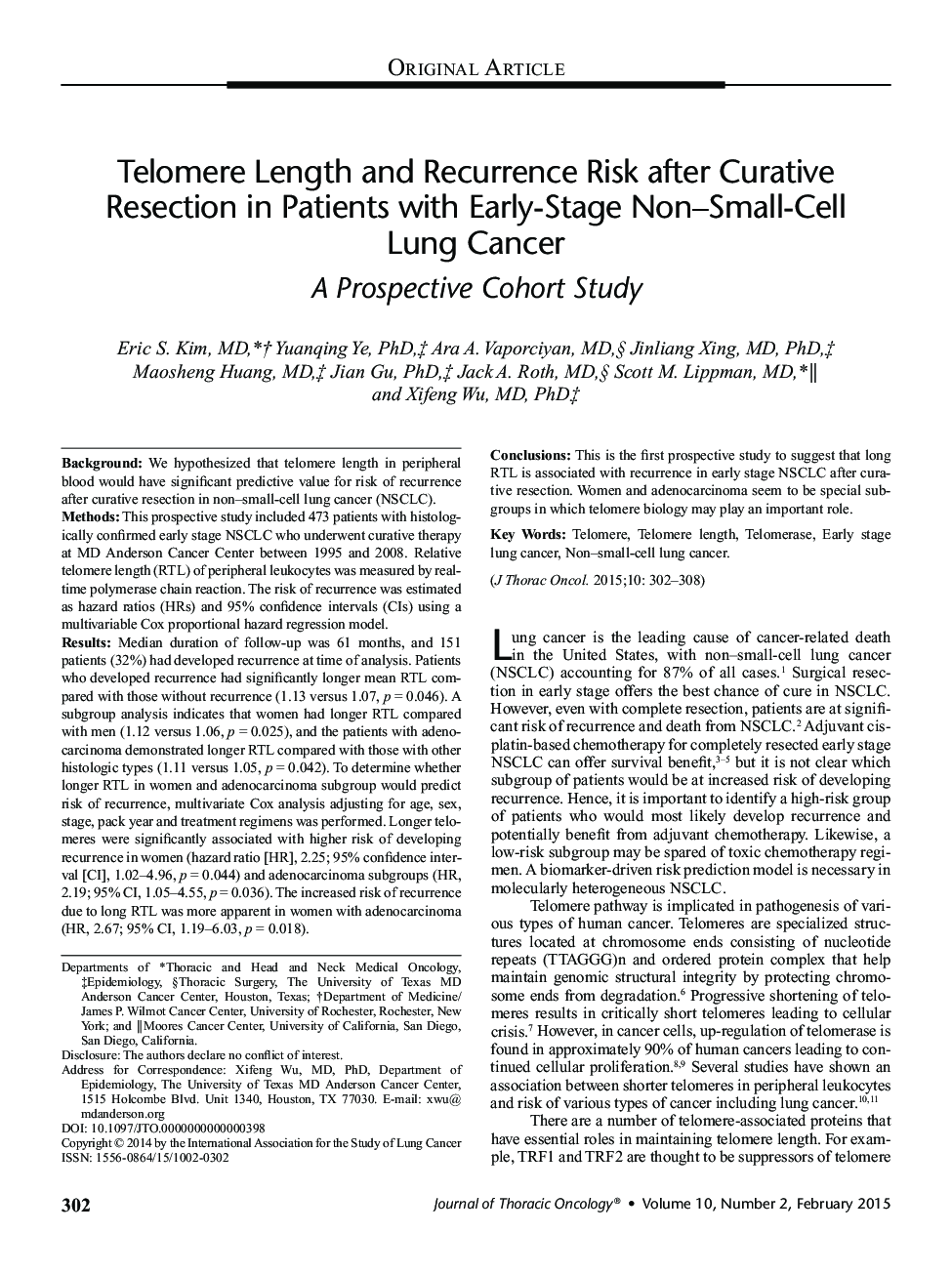| Article ID | Journal | Published Year | Pages | File Type |
|---|---|---|---|---|
| 6193211 | Journal of Thoracic Oncology | 2015 | 7 Pages |
BackgroundWe hypothesized that telomere length in peripheral blood would have significant predictive value for risk of recurrence after curative resection in non-small-cell lung cancer (NSCLC).MethodsThis prospective study included 473 patients with histologically confirmed early stage NSCLC who underwent curative therapy at MD Anderson Cancer Center between 1995 and 2008. Relative telomere length (RTL) of peripheral leukocytes was measured by real-time polymerase chain reaction. The risk of recurrence was estimated as hazard ratios (HRs) and 95% confidence intervals (CIs) using a multivariable Cox proportional hazard regression model.ResultsMedian duration of follow-up was 61 months, and 151 patients (32%) had developed recurrence at time of analysis. Patients who developed recurrence had significantly longer mean RTL compared with those without recurrence (1.13 versus 1.07, p = 0.046). A subgroup analysis indicates that women had longer RTL compared with men (1.12 versus 1.06, p = 0.025), and the patients with adenocarcinoma demonstrated longer RTL compared with those with other histologic types (1.11 versus 1.05, p = 0.042). To determine whether longer RTL in women and adenocarcinoma subgroup would predict risk of recurrence, multivariate Cox analysis adjusting for age, sex, stage, pack year and treatment regimens was performed. Longer telomeres were significantly associated with higher risk of developing recurrence in women (hazard ratio [HR], 2.25; 95% confidence interval [CI], 1.02-4.96, p = 0.044) and adenocarcinoma subgroups (HR, 2.19; 95% CI, 1.05-4.55, p = 0.036). The increased risk of recurrence due to long RTL was more apparent in women with adenocarcinoma (HR, 2.67; 95% CI, 1.19-6.03, p = 0.018).ConclusionsThis is the first prospective study to suggest that long RTL is associated with recurrence in early stage NSCLC after curative resection. Women and adenocarcinoma seem to be special subgroups in which telomere biology may play an important role.
